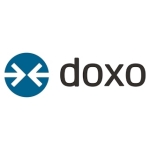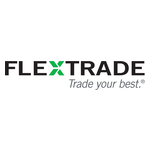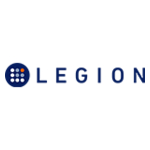doxo Introduces the Cost of Bills Index™, Uncovering Most Affordable, and Most Expensive, Places to Live
New doxoINSIGHTS tool provides standard comparison index for the most fundamental expenses that comprise the cost of living
SEATTLE–(BUSINESS WIRE)–doxo, the innovative web and mobile bill pay service, today announced the launch of the Cost of Bills Index™ (COBI). The COBI is based on doxo’s nationwide bill payment statistics for the ten most common household bill categories, and provides a standard comparison index for the most fundamental expenses that comprise the cost of living. Leveraging doxo’s unique, aggregate, anonymized bill pay data, the COBI is a new feature of doxoINSIGHTS, which provides a comprehensive look into the Bill Pay Economy™ at the state, county and city level.
Alongside the launch of the COBI feature, doxoINSIGHTS released its 2024 Cost of Bills Index Report which reveals how much it costs to live in one area as compared to another as it relates to the most common household bills. This includes Utilities, Cable & Phone, Mobile Phone, Auto Loans, Auto Insurance, Life Insurance, Health Insurance, Alarm & Security, Rent, and Mortgage.
Providing a standard benchmark, the report includes state- and city-specific breakdowns with comparisons to the national average, and uncovers the five most and least expensive U.S. states to live in, based on the COBI:
The Top 5 Most Expensive U.S. States by the Cost of Bills Index (COBI)
|
State |
Standard COBI* |
% Below National Average |
|
Hawaii |
145 |
+45% |
|
California |
142 |
+42% |
|
Massachusetts |
133 |
+33% |
|
New Jersey |
132 |
+32% |
|
Maryland |
126 |
+26% |
The Top 5 Least Expensive U.S. States by the Cost of Bills Index (COBI)
|
State |
Standard COBI* |
% Below National Average |
|
West Virginia |
75 |
-25% |
|
Mississippi |
81 |
-19% |
|
Arkansas |
83 |
-17% |
|
Oklahoma |
84 |
-16% |
|
Kentucky |
84 |
-16% |
*For the COBI, the number 100 represents the national average and then, states, counties and cities are assigned a number, either above or below 100, based on how they compare to the national average. For example, the COBI for Seattle, WA is 143, meaning 43% above national average, while the COBI for Charleston, WV is 84, meaning 16% below national average.
“As consumers continue to feel the heat from inflation, it’s never been more critical to arm them with data transparency that uncovers not only how their household bills compare to the national average, but also where are the most affordable places to live,” says Liz Powell, Senior Director, Insights at doxo. “With COBI, doxo provides a snapshot into the amount houses are spending on the ten most essential bills, down to the state, county and city level. Adding COBI to the doxoINSIGHTS platform gives consumers a deeper level of understanding so they can make more-informed decisions and enhance their cost savings during a time where every dollar counts.”
Through the easy-to-navigate tool, the COBI offers three key ways to examine the household cost of bills for each state, county and city:
- Standard COBI: household bills expense per month, including housing. This version of the COBI is representative of the total amount spent on the ten most common household bills in a given area, inclusive of mortgage and rent, as it relates to the average national income.
- Standard COBI Without Housing: household bills expense per month, excluding housing. This version of the COBI is representative of the total amount spent on the ten most common household bills in a given area, excluding mortgage and rent, as it relates to the average national income.
- Income-Adjusted COBI: household bills as a percent of income, including housing. This version of the COBI is representative of the total amount spent on the ten most common household bills in a given area, including mortgage and rent, as it relates to the average income in the local (state, county, city) area.
For more on the COBI’s methodology please visit: https://www.doxo.com/w/cost-of-bills-index/
doxoINSIGHTS Offers Transparency Into the Most Essential Household Financial Obligations
In addition to the newly launched Cost of Bills Index (COBI), doxoINSIGHTS offers a look at the aggregate basket and categorization of the ten most essential household bills – Utilities (water, electric, gas and waste), Cable & Phone, Mobile Phone, Auto Loans, Auto Insurance, Life Insurance, Health Insurance, Alarm & Security, Rent, and Mortgage. For each state, county and city, doxoINSIGHTS incorporates the following comparisons:
- Total Spend and Proportion of Household Income: for each region, a standard basket of the most essential household bills enables comparison by total dollar amount and as a percent of local household income.
- Bill Spending Breakdown for Each Essential Household Bill: itemization of the local average for each of the ten most essential household bills (outlined above), with comparison to the national average.
- The “Bill Pay Cost of Living” Indexed and Ranked for Every City, County and State: every regional market ranked and compared in terms of amount spent on essential bills in absolute terms and relative to local household income levels.
In addition to the above, doxoINSIGHTS offers a look at how and when residents typically pay their bills, and which local bill pay service providers see the most volume in terms of payments.
Based on Actual Bill Payment Data, doxoINSIGHTS Provides the Nation’s Most Comprehensive and Reliable Set of Consumer Bill Pay Data
Recurring bills reflect the obligatory financial commitments of households, and as such, are the best indicator of consumer financial obligations, flexibility and health. Earlier this year, doxo released its 2024 U.S Household Bill Pay Report, revealing that Americans spend $3.35 trillion annually on household bills, comprising nearly three quarters of all U.S. consumer spending1. In addition, according to The U.S. Census Bureau, the real median household income in the U.S. is $74,7552. This number, combined with doxo’s estimate that the average U.S. household spends $25,513 per year on the ten most essential bills, suggests that more than one third of Americans’ yearly salary is put toward core expenses. These findings are what provide the foundation for doxo’s Cost of Bills Index.
By incorporating tens of millions of bill payments across all U.S. income and regional demographic segments, doxoINSIGHTS directly represents what Americans actually pay on their bills. In contrast to other industry data sources – which often mix household recurring bill expenses with employer-paid or withheld expenditures (e.g. health insurance and taxes), and retail and discretionary spending (i.e. credit card balances) – doxo’s unique, nationwide household bill pay data specifically quantifies the actual consumer portion of total recurring bill spend and household penetration rate for each category. Additionally, doxo’s large sample of over 8 million consumer bill payers provides a much more accurate view than error-prone surveys, which have size, bias and accuracy issues.
doxo’s economic and demographic data matches U.S. household distributions closely, taking into account individual service providers and economic conditions at the local level. This results in a large, highly accurate sample that is:
- Statistically significant, with data pulled from over 10 million paying consumers
- Geographically diverse, capturing payment activity in 97% of all U.S. zip codes (100% of zip codes with populations of at least 50 people)
- Economically representative, with participation from all income brackets
- From across 45 different biller service categories, and more than 120,000 unique billers
- Representative of all payment funding sources, including bank accounts, credit cards, and debit cards
To learn more about COBI and doxoINSIGHTS visit https://www.doxo.com/w/insights/.
About doxoINSIGHTS
doxoINSIGHTS provides direct insight into The Bill Pay Economy™ by leveraging consumer surveys and doxo’s unique aggregate bill pay data set, comprising actual bill payment activity to confirmed household service providers across the country. doxo data brings together the broadest available data set for analyzing actual household bill payment activity, pulling from over 10 million paying consumers across over 97% of U.S. zip codes. doxo’s payment network covers over 120,000 billers in 45 different service categories and enables payments using bank accounts, credit cards or debit cards. This uniquely broad statistical foundation powers doxoINSIGHTS reports – uncovering key trends for household financial health and bill payment behavior.
About doxo
doxo delivers innovation that transforms the bill pay experience for consumers, billers and financial technology providers. For over 10M consumers, doxo’s all-in-one bill pay makes it simple to organize and pay any bill on any device through a secure checkout. For billers, doxo’s network-driven platform enables online and mobile payments with a ridiculously simple integration, radically lower costs, and game-changing features that are unavailable with legacy bill pay vendors. For fintech partners, doxo delivers financial innovations to consumers across 97% of U.S. Zip Codes, paying from more than 5,000 financial institutions to over 120,000 billers in 45+ service categories. For employees, doxo is a creative, ever-learning team that is passionate about building fintech tools that dramatically improve the bill pay experience. For investors, doxo provides an extraordinary opportunity to invest alongside Jackson Square Ventures, MDV, and Bezos Expeditions to disrupt a market that accounts for over $4T of U.S. Household spend. To learn more about America’s leading bill pay network, visit doxo.com.
____________________
1 https://apps.bea.gov/iTable/iTable.cfm?reqid=19&step=3&isuri=1&nipa_table_list=2014&categories=underlying
2 United States Census Bureau, Income and Poverty in the United States
Contacts
Dotted Line Communications for doxo
Jenny Davis
[email protected]






































